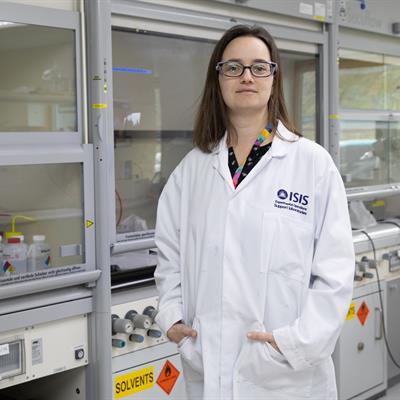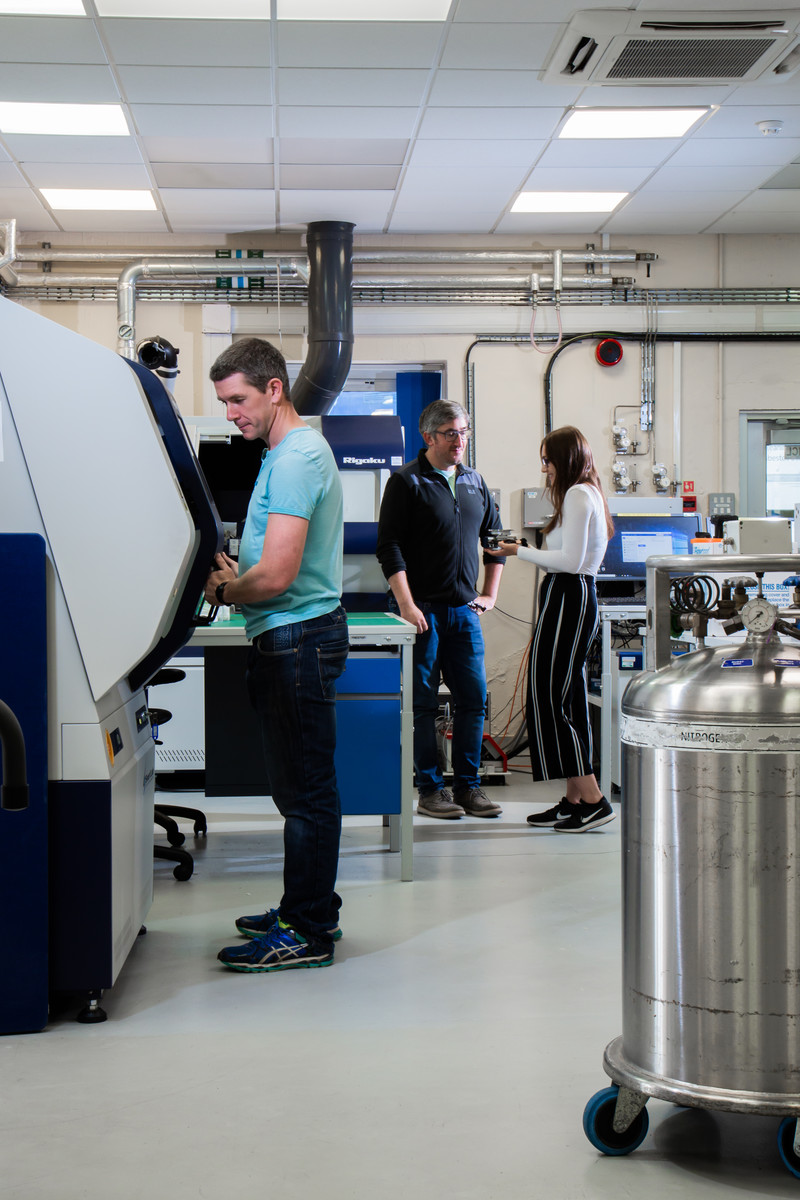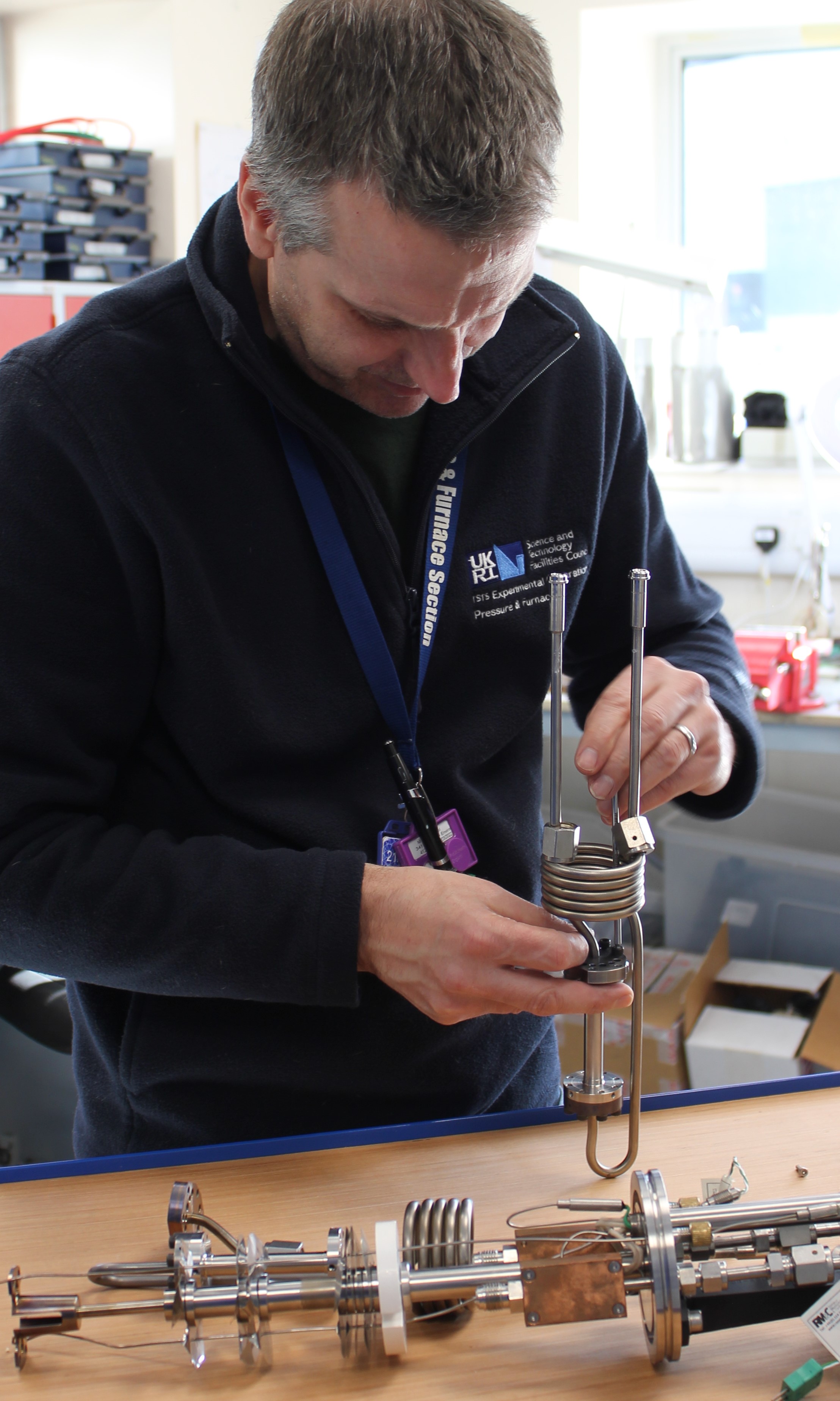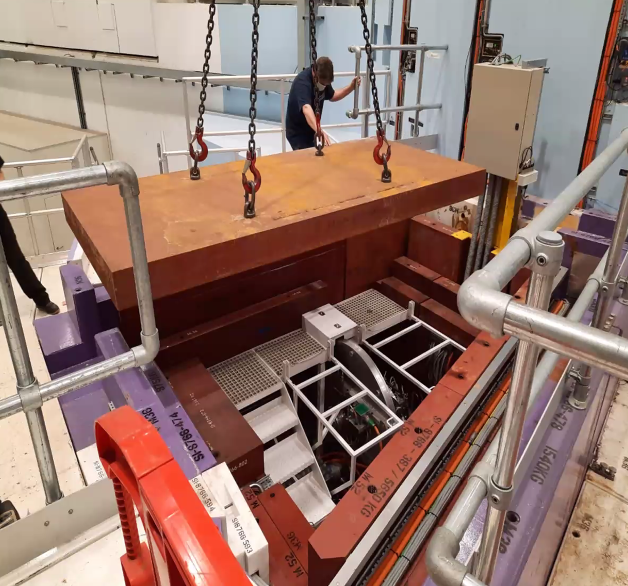This time around, things are a bit different, as we're coming out of a much longer shutdown than normal, and only target station 2 will be in operation. We speak to the accelerator team, the support laboratories, the user office, the pressure and furnace section and an instrument scientist to find out what they're doing to prepare for the upcoming user cycle.
Accelerator
Maybe the most obvious part of preparing for a user cycle is to turn the synchrotron on, producing beams of protons that then produce the neutrons and muons needed for experiments. But it's not just the case of pressing an “on" switch and being ready to go, as Hayley Cavanagh, Beam Physics Operations Section Leader, explains; “We have over 10,000 parameters we can control to establish and optimise the beam."
The accelerator team usually allow one week for every month of shutdown to prepare for operations. After this extended shutdown, they have allowed longer than usual for all the preparations, as one of the projects being completed was the replacement of linac tank 4; “it's not every start-up you have a new linac tank to commission!" Hayley adds.
To begin, they start with the linear accelerator, ensuring beam from the ion source travels through all four linac tanks and achieves the correct energy. They then let the beam into the synchrotron and down the extracted proton beamline to the neutron target. As this cycle is just for TS2, they don't need to do this for the TS1 target, or for the muon target.
When they commissioned beam through the new tank 4, they began with a low intensity, 10% diluted beam, before returning to normal operating intensity. Once the beam is established all the way to the target and optimised they increase the frequency of the beam pulses.
Throughout the setup process they are monitoring the beam shape, position, and intensity, as well as the spatial and temporal distribution of any beam loss. If there is something wrong, the team have to try and work out what is happening. “We use the available diagnostics to try and find out exactly where and what the issue is. If we need to send someone in to fix something in person then we need to be very certain where they need to go," Hayley explains.
The aim is to maximise the beam current on target whilst reducing beam loss as much as possible, running the accelerator chain efficiently. Keeping these low beam loss levels is crucial for ensuring hands-on maintenance tasks can be done when needed.
As well as the accelerator team, the start-up also requires input from staff across lots of other areas of ISIS, including the RF, controls, electrical, mechanical, operations and diagnostics teams. “We need all of their support before we even get the beam started," she adds.
“For this start-up, our deadline is a week before the user cycle begins. We need to make sure the equipment is operating correctly, and any issues have been exposed and addressed before the cycle begins. This also gives the opportunity for instrument scientists to begin their calibrations after the long shutdown, and we may even get some machine physics development time."
Even when things seem to be running smoothly, the beam requires constant monitoring and immediate attention if it fails. The team work in shifts during the start-up, and are on-call out of working hours, to make sure they can be on hand to fix any issues. The experience of the team members and the fact they rotate to bring a fresh pair of eyes gives them an advantage when it comes to solving complex problems.
“It can be challenging during the start-up after a long shutdown, especially if there are serious issues," Hayley admits; “but we encounter different difficulties in each start-up, and even after maintenance days when we only get a shorter period of time to re-establish beam."
User Office
Making sure the logistics of a user's visit run smoothly depends on the organisational powers of the joint ISIS and CLF (Central Laser Facility) user office. The team of five manage the visit process which begins when a user submits a visit request. They book their accommodation, arrange their site pass and ensure all the users' relevant safety training has been completed. They are on hand to answer queries and help the users with any issues that arise. “It's like being a PA, but to hundreds of people," explains Emma Roberts. “We work closely with the ISIS Main Control Room to make sure they know who is coming, and to make sure the process for getting a site pass and radiation badge is ready for when a user arrives."
During the ISIS shutdown they have continued to manage user visits to CLF, as well as any longer-term ISIS visitors. “Although we have been busy throughout the ISIS shutdown and COVID lockdowns, we're starting to notice the requests ramping up again, and we're looking forward to the user cycle starting again," says Emma. “It will be nice to see more people again in person."
The timing of the long shutdown actually worked out quite well, as the period of fewer visitors coincided with the refurbishment of Ridgeway House. Users will be pleased to know that the rooms have been upgraded and the breakfast is back!
As well as visits, Emma manages the arrangements for the Facility Access Panel (FAP) attendees and helps to organise ISIS workshops and the user group meetings, including NMSUM, which is taking place in April this year.
Support laboratories
As well as the beamlines, ISIS also runs support laboratories, which are open for users who need to carry out supplementary experiments, as well as to help with health and safety issues. Throughout the shutdown, the labs have still had regular use from visiting scientists, placement students and ISIS PhD students, but the team still need to prepare for the arrival of external users.
Sarah Langham is the Senior Laboratory Support Technician and has been getting the labs ready for a number of weeks. She has used the extended shutdown to do a chemical inventory, looking through old and, in some cases, badly labelled chemicals. “We had to do some detective work to find out what the chemicals were and who they belonged to," explains Sarah. “We sent a lot of samples back to users and disposed of about 1000 other different chemical samples."

Before the cycle, they are now going through the usual pre-cycle routine to re-stock the labs, tidy and regenerate the glove boxes and order in stock chemicals. For this cycle, they have also been removing the COVID labelling on the floors and benches. This cycle will be half “usual" cycle work and part continuing the inventory and other long shutdown work over in TS1. A lot of this work is dealing with legacy samples, as six years ago they have a new chemical labelling system.
In the deuteration lab, a lot of the long shutdown was spent dealing with the aftermath of a fire in the lab in May 2021. Although no-one was injured, the lab was taken out of action. Despite this, Sarah Youngs, the Deuteration Facility Operations Manager (pictured, left), and the rest of the team have been working in a temporary lab and have still been able to make some user samples for the upcoming cycle. “We have been limited by what equipment they were able to install in the new space," Sarah explains; “and so are providing about 15-20% of what we would normally do for a user cycle, helped by lower demand as this cycle is for TS2 only." The old lab has now been cleared and it is planned to have it back in action by the end of 2022.
 The Materials Characterisation Lab (MCL), pictured on the right, continued welcoming user measurements and visits throughout the long shutdown. Gavin Stenning, the MCL manager, explains; “We had more measurements from staff who had the chance to do work they wouldn't have been able to do with users present." Usually, people use the MCL weeks or months in advance of their experiment to screen samples. As well as this, users carry out follow-up experiments after their beamtime, and there are also some last-minute requests during the cycle. The team have an annual shutdown in January to carry out calibration and standards measurements. The long shutdown enabled them to spread this work out across the year, and commission new equipment including a cryostat for the in situ X-ray diffractometer, and a battery cell.
The Materials Characterisation Lab (MCL), pictured on the right, continued welcoming user measurements and visits throughout the long shutdown. Gavin Stenning, the MCL manager, explains; “We had more measurements from staff who had the chance to do work they wouldn't have been able to do with users present." Usually, people use the MCL weeks or months in advance of their experiment to screen samples. As well as this, users carry out follow-up experiments after their beamtime, and there are also some last-minute requests during the cycle. The team have an annual shutdown in January to carry out calibration and standards measurements. The long shutdown enabled them to spread this work out across the year, and commission new equipment including a cryostat for the in situ X-ray diffractometer, and a battery cell.
James Taylor, the Support Laboratories Operations Manager, has been working on supporting the safe working of users on site. There have been some changes to the ERA system, mainly the back end, as part of ongoing updates. Also new for 2022 is a lab chemical safety test for people wanting to use the labs. During the shutdown, James rationalised the nuclear materials inventory and disposed of a large number of samples. “This cycle is simpler than a normal cycle for us," explains James, “there are fewer instruments running and, due to the uncertainty of restrictions, we have actively scheduled those with less complex samples. However, I am working a lot with users who are planning to submit proposals for the next deadline that involve hazardous chemicals, to understand the feasibility of the experiments."
Pressure and Furnace team
 The pressure and furnace section provide sample environment equipment and technical support to visiting scientist for experiments that involve high temperatures, high pressures and gas handling.
The pressure and furnace section provide sample environment equipment and technical support to visiting scientist for experiments that involve high temperatures, high pressures and gas handling.
In advance of an upcoming cycle, Chris Goodway and his team work closely with the instrument scientists and users to manage the challenging logistics of getting experiments scheduled. He explains; “the relevant equipment and staff member(s) need to be 'booked' in the same way as the neutron beamtime. Some experiments can take up to three days to set up, run for two days and then need to be dismantled afterwards and conditioned to be used on another experiment. Our staff are also on call during the beamtime itself, so an experiment will take a lot longer for our team than for the user."
Experiments are more complex for this team if they combine different aspects of temperature/gas handling work. In particular, catalysis reactions, as they require additional equipment setup, and more information is required to complement the neutron data such as residual gas analysis or pre-experiment sample conditioning.
Although this cycle is just for TS2 instruments, some of the scientists are making the most of not having anyone on TS1 using any equipment and getting in lots of complex experiments, so it's not necessarily a simpler cycle for the team. “As well as setting up the equipment, we need to complete all the safety documentation, and train the users and beamline scientists on using the equipment," adds Chris.
This cycle is different to others, as it comes off the back of an extended shutdown, during which the team have been able to do a lot of equipment maintenance. All the gas systems, pressure cells and furnaces have been stripped, rebuilt and leak tested. They have also been able to run some offline experiments, acting as a test for users who have a complex experiment in mind and want to check the feasibility without using valuable beamtime.
Instrument scientist
 As soon as the ISIS Facility Access Panels (FAPs) have made a decision about which proposals have been awarded beamtime, the instrument scientists get in contact with the users and begin to put together the schedule for the instrument. They need to align the availability of the users, the ISIS staff member who will be on call and any equipment that is needed.
As soon as the ISIS Facility Access Panels (FAPs) have made a decision about which proposals have been awarded beamtime, the instrument scientists get in contact with the users and begin to put together the schedule for the instrument. They need to align the availability of the users, the ISIS staff member who will be on call and any equipment that is needed.
As well as planning the experiment dates, they also need to commission the instrument itself to make sure it is ready for user operations. During the long shutdown some of the beamlines have had significant upgrades, which means additional testing needs to be done before the cycle. The LET instrument, for example, has had a new double disk chopper installed. These large disks rotate at up to 300 Hz to provide high energy resolution for the measurements. The previous chopper had been in place since LET was built and was only able to run at 100 Hz in the previous cycle, so this was a welcome upgrade.
Image, right, shows the removal of the shielding to reveal the LET choppers that were replaced.
Christian Balz, one of the LET instrument scientists explains the commissioning process; “we first test the choppers before the beam is on, to make sure they can work at full speed without vibrating too much, and to check that there are no other issues. When the beam is on, we can then calibrate them to ensure the correct pulse lengths of the neutron beam are achieved."
As well as the new choppers, LET has also had a new cryostat and a new Data Acquisition Electronics (DAE) system installed during the long shutdown. Christian is also testing the DAE and the detectors, firstly with the beam off, by measuring the background (for example cosmic neutrons, as shown in the video below) and ensuring all the LET detector tubes are registering neutrons as expected. He adds; “if something is wrong then we have to find the cause – this can be anything from the detector tube itself to an unplugged cable."
“When the beam comes on, we can then test the detectors by using a standard vanadium sample. We want to understand the efficiency of each detector tube so that we create a calibration file for the user measurements," he adds.
Once all the mechanics and electronics that make up the instrument have been commissioned, then it's time to welcome the users. Christian started working at ISIS in March 2020 and, as the 2020/21 cycles were mainly run remotely, this will be his first 'normal' user cycle; “I'm excited but also a bit nervous!"
